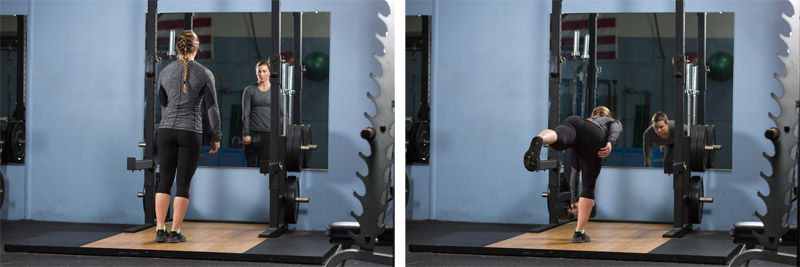If building a lot of muscle mass is among your clients’ fitness goals, the deadlift should be one of your go-to exercises. This power move helps train numerous major muscles, including the hamstrings, glutes, lower-back and trapezius muscles. This exercise can be modified so seasoned body builders, beginning exercisers and everyone in between can perform it safely. Just be sure to take extra precautions with individuals who have lower-back issues.
The Deadlift

The deadlift has a slightly unique starting position in comparison to most exercises. The barbell, already loaded with weights, sits on the floor rather than on a bench or squat rack.
To begin the deadlift, stand with the feet slightly behind or just beneath bar. Bend at the knees, squat down and grasp the barbell with a shoulder-width overhand grip. Lift the bar by extending the hips and knees fully, so that at the end of the move, you are standing upright while holding the barbell. Be sure to pull the shoulders back at the top of lift if they are rounded or slightly forward. Lower the bar by squatting down and repeat.
For more detailed instruction on performing the deadlift, along with step-by-step video instructions, check out this ACE ProSource article: How to Deadlift.
Romanian Deadlift

The straight-leg deadlift is probably the most common variation of the deadlift. This exercise works the majority of the posterior muscles, with special emphasis on the hamstrings.
Stand with the feet shoulder-width apart and grab the barbell with an overhand, shoulder-width grip. Hinge forward at the hips and lower the barbell toward the top of the feet. Be sure to keep the legs straight throughout the entire movement. Return to the starting position by extending from the waist and hips until you are standing upright. If the shoulders are rounded, pull them back at the end of the move.
One Leg, One Arm Dumbbell Deadlift

This exercise is a fun, challenging way to increase stability, balance and core strength, while working similar muscles as the traditional deadlift. This exercise also helps to correct muscle imbalances in the legs.
Begin this exercise with the feet shoulder-width apart and the hands at the sides of the body. Hold a dumbbell in the left hand. Lean forward from the waist and extend the left leg behind while performing a stiff-leg deadlift; keep the right foot on the floor. Return to the starting position. Repeat all reps on the same leg before moving to the other leg.
Cable Machine Romanian Deadlift

The cable deadlift is an option for clients who lack balance and coordination, and for exercisers who don’t like using barbells or dumbbells.
To begin, grab a cable in each hand and stand with the feet shoulder-width apart. With medium resistance on the cable machine and the knees slightly bent, bend forward at the hips and let the cable resistance slowly pull the hands toward the top of the feet. Extend from the hips and return to the starting position. Be sure to keep the back straight throughout the entire movement.
Resistance Band Single-leg Deadlift

Traditional deadlifts with an exercise band may be too easy for many clients. To increase the intensity, this exercise can be performed while balancing on one leg, which challenges both balance and the core musculature.
Attach a resistance band to a low point on the wall, similar to where a low cable pulley would be on its lowest setting. Grab one handle in each hand and stand with the feet shoulder-width apart. Step away from the anchor to create medium resistance on the bands. Bend the right knee slightly and lean forward from the waist. Let the arms move forward as you feel some of the resistance on the bands decrease. Be sure to keep the arms straight throughout the movement. Extend from the waist to return to the starting position. Perform all reps on the same leg and then switch to the other leg.




 by
by 






 by
by